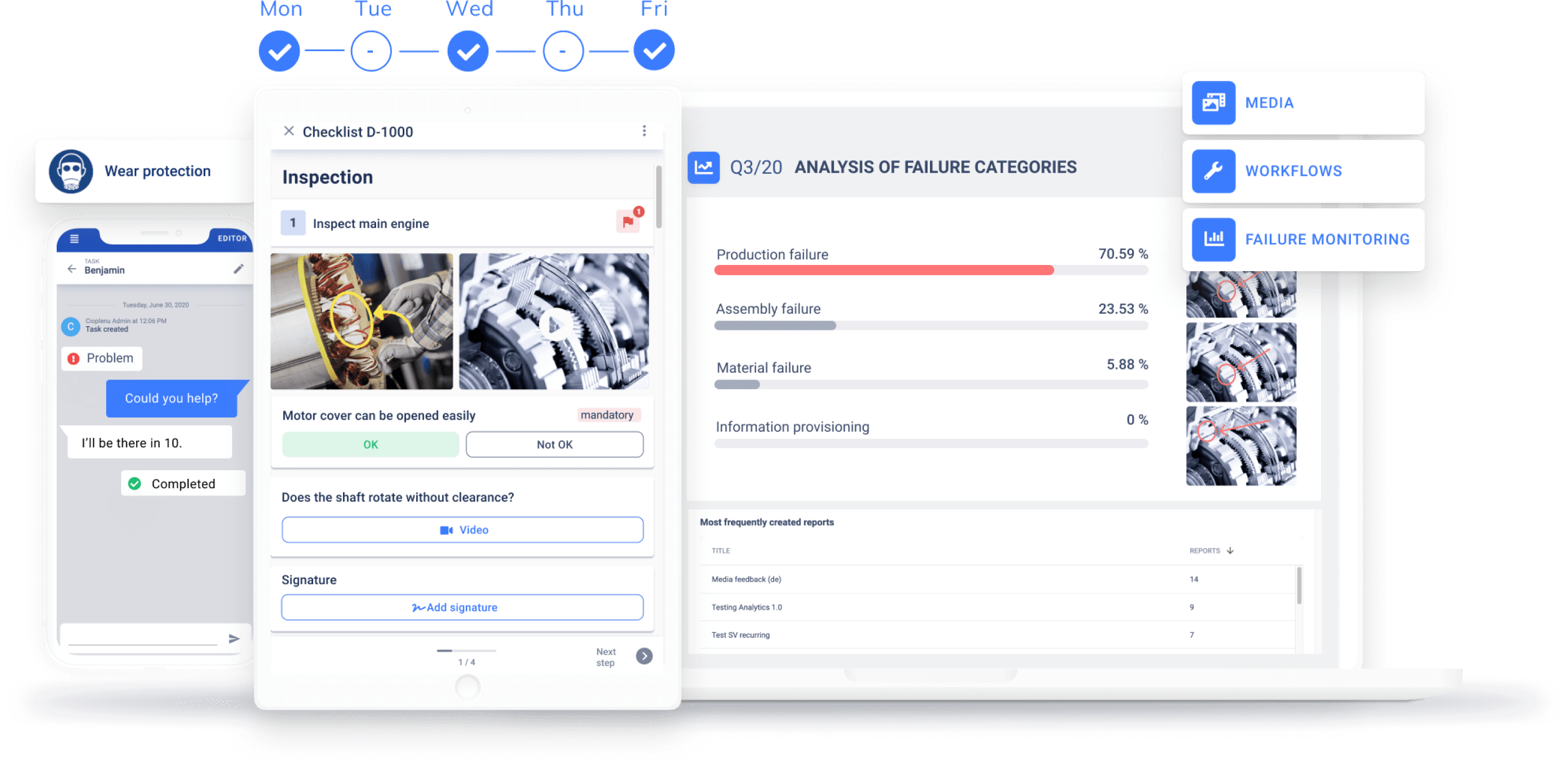What it's about
In this blog, you can read how to create a basis for efficient self-learning and thus avoid the "newcomers" having to run along helplessly for a long time. We highlight the four most common problems that can occur during onboarding and show how software solutions can prevent them.
It takes time to train employees
Specialists are currently urgently needed. But when the long-awaited new colleague finally starts his first day at work, the challenge is far from over. No matter how good the training and experience is, every new employee needs time to be properly trained, to understand processes and procedures and to familiarize themselves with the new working environment. Computer programs, manufacturing processes, maintenance intervals as well as the development and production of machines and systems are individually different from company to company and largely based on individual employee know-how.
Train employees: 4 problems
The fact is: What one person builds up over years, sometimes decades of experience, the other will not learn within a few days. It takes a long time until a new employee is productive. Unfortunately the following situations are still part of everyday life in most companies:
1. Different levels of knowledge
New employees and temporary workers have to find out from the “old hands” what takes up a lot of the working time of experienced employees and distracts them from their actual tasks.
2. Outdated documents
Information documented in paper documents is often outdated and incomplete. The quality of work suffers as a result.
3. Missing documentation
Employees’ experience is poor or not documented. Certain tricks are not found in any manual, but exist only in the minds of certain employees.
4. No standard processes
Standard processes are often lacking for structured training.
The solution: Train emloyees with digital, interactive and integrated software
The solution to all these problems is very simple: simple documentation using video and images to document the process step by step. Your employees can easily click through the individual work steps, confirm their completion and at the same time document possible irregularities or errors. The interaction with the software not only allows your employees to experience the meaningfulness of their own work in a completely new way, it also helps to keep processes up to date and to log experiences for other colleagues. In addition, didactically structured learning materials help the employee with self-learning and support on-the-job training so that he can continuously qualify for further tasks.

Benefits for the user
Unexperienced employees can better understand individual work steps through comprehensive information.
Relief for experienced production employees.
The app also supports more experienced production employees in dealing with the increasing number of variants.
Employees are less under pressure at work, because they know where to look if they are unable to continue.
Advantages for the company
The new employee can work productively faster.
The process knowledge of all employees is digitally secured.
The fun factor in handling the intuitive software motivates the employees additionally, the frustrated search for information in the paper stack is no longer necessary.
Employees can be deployed more flexibly in various areas.
Conclusion
Training employees with digital work instructions and checklists is worthwhile: Unfamiliar work processes can be learned interactively and training phases in companies are enormously facilitated and accelerated. Evaluations have shown that employees who learn the basics via tablet are productive 50% faster. Self-learning also means 80% less work for experienced colleagues when training new employees.
Work Instruction 4.0
With digital work instructions and checklists, you increase efficiency and make better decisions. Read in our whitepaper how our software solution can help you!
Editha Bertsch
Editha is an experienced project management expert for manufacturing companies. With a clear understanding of the specific challenges of the industry, she is passionate about developing innovative solutions.



